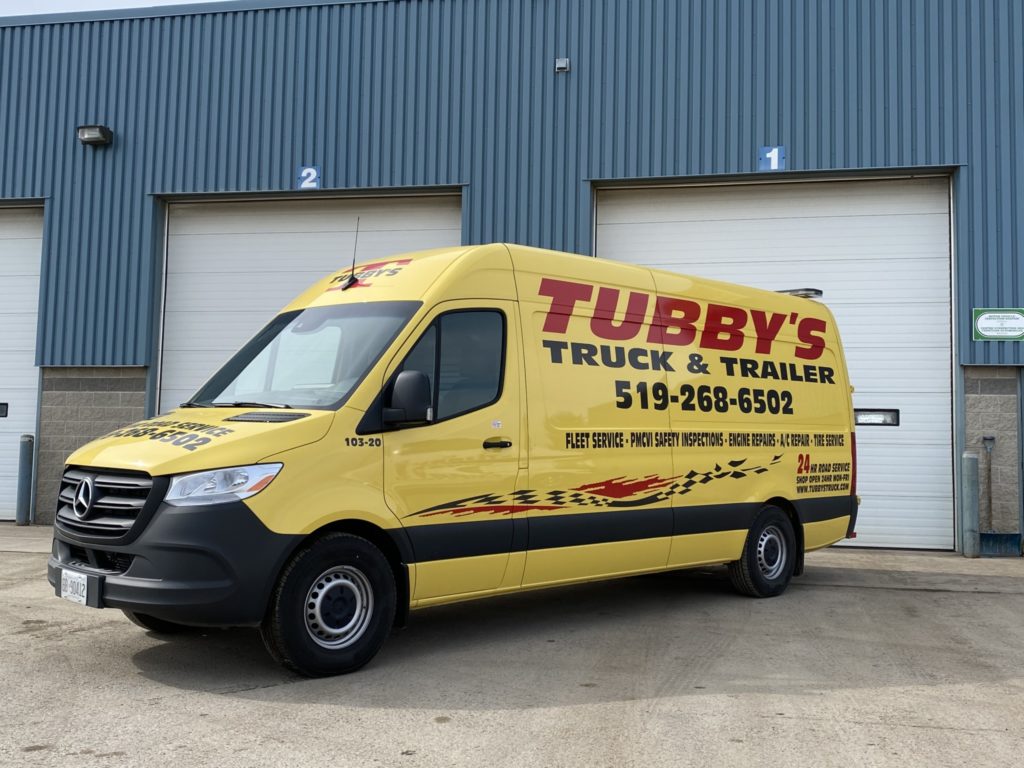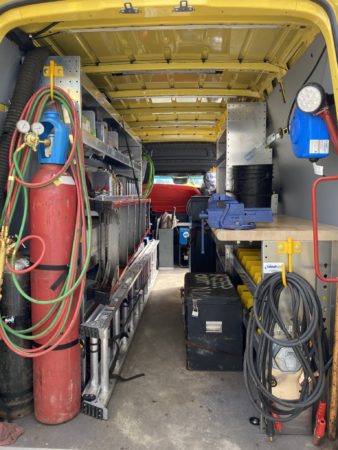On the (side of the) road again

As truck complexity has increased, a visit to a shop is more frequently needed to get a broken-down truck back up and running. But mobile repair units still play a valuable role in minimizing breakdown expenses and keeping units rolling. We recently caught up with James Allewell, chief operations officer of Tubby’s Truck & Trailer and Tubby’s Tire Service, and Serdar Okur, Idealease service and maintenance manager with Rush Truck Centres of Canada to discuss trends and challenges facing mobile repair unit operators.
Finding technicians
Finding skilled technicians is an industry-wide challenge. Finding techs willing to crawl under a truck when it’s -20 C and snowing on the side of a busy roadway is even more difficult.
“Mobile technicians must be aware of the dangers that roadside repairs can have,” acknowledged Okur. “These techs have to be more experienced than any other technician because repair decisions have to be made quickly and executed quickly.”
In fact, Okur said a mobile technician should have at least five years of shop experience. “And in my opinion, driving a truck in his past experience might help as well,” he added. “He needs to be more than an oil change technician. Mostly because today, we are going out on calls for drivers that mostly are not experienced themselves. A lot of the time, we go out on a call and our mobile techs have to educate the driver on how the unit operates.”
While being a roadside technician is challenging, it can also be rewarding, pointed out Allewell. Often, mobile technicians will drive 20 minutes to a service call, do 20 minutes of work, and drive 20 minutes back to the shop. “There’s time where it’s crap,” he admitted, “but other times where it’s pretty easy work.”
Spec’ing the trucks
A key consideration when choosing a mobile repair vehicle is gross vehicle weight, and whether or not the truck will require a D/Z licence operator or a CVOR. Tubby’s has transitioned to Mercedes-Benz Sprinter vans.
“We are right at the limit before needing a yellow sticker,” Allewell said. Fuel economy was also a consideration. “We are always heavy and we idle a lot. It’s by far the cheapest vehicle to operate. We easily get 20 mpg with them.”
Tubby’s runs five mechanical service trucks, and four tire service trucks out of Dorchester, Ont. The most common calls for its mechanical service trucks are for air leaks and aftertreatment regen issues.
Okur said Rush operates heavier medium-duty trucks when performing on-site oil changes, but pickup trucks and Sprinter vans are also viable.
“Our latest mobile truck is 20-ft., however 18-ft. is also available through our Idealease network. A couple of our old mobile units require a D/Z licence to drive, however going forward we will only order G class since it is even harder to get a technician with a D/Z licence,” Okur said.

Safety spec’s are also important, to lessen the risk mobile techs face on the job. Tubby’s has gone to fully reflective, high-visibility yellow paint schemes. At Rush, safety training – in-class, online and hands-on – is ongoing.
“There are certain things a mobile tech should be aware of and follow at every service call, such as turning on hazardous lights while working, putting wheel chocks, removing the key from the ignition, blocking the unit with his or her mobile unit while working on it, and pulling the unit to the safest lane or position and keeping constant communication with dispatch,” he noted.
Equipping the truck
Outfitting a mobile repair unit is a delicate balance between ensuring the technician has all the tools needed to do the job, while not exceeding GVWR.
“On our service trucks, we have a full set of torches, welder, generator, large air compressor and a large stock of parts,” Allewell said.
Okur said hand tools are the most important consideration, and rhymed off a list of such tools. “At roadside you don’t want to have to pull out an air line or cables, unless absolutely needed. Basic tools such as wrenches, sockets, ratchets, screwdrivers, filter wrenches, battery booster, ladder, drill gun, flashlight, battery-operated bit driver, 3/8-inch driver battery gun, etc.”
When choosing a mobile service provider, Allewell suggested making sure they have a shop to bring the truck back to if necessary, for further repairs.
“You can’t always fix it on the side of the road. If a person doesn’t have a shop, you’re stuck looking for somewhere to go,” he added.
Have your say
This is a moderated forum. Comments will no longer be published unless they are accompanied by a first and last name and a verifiable email address. (Today's Trucking will not publish or share the email address.) Profane language and content deemed to be libelous, racist, or threatening in nature will not be published under any circumstances.